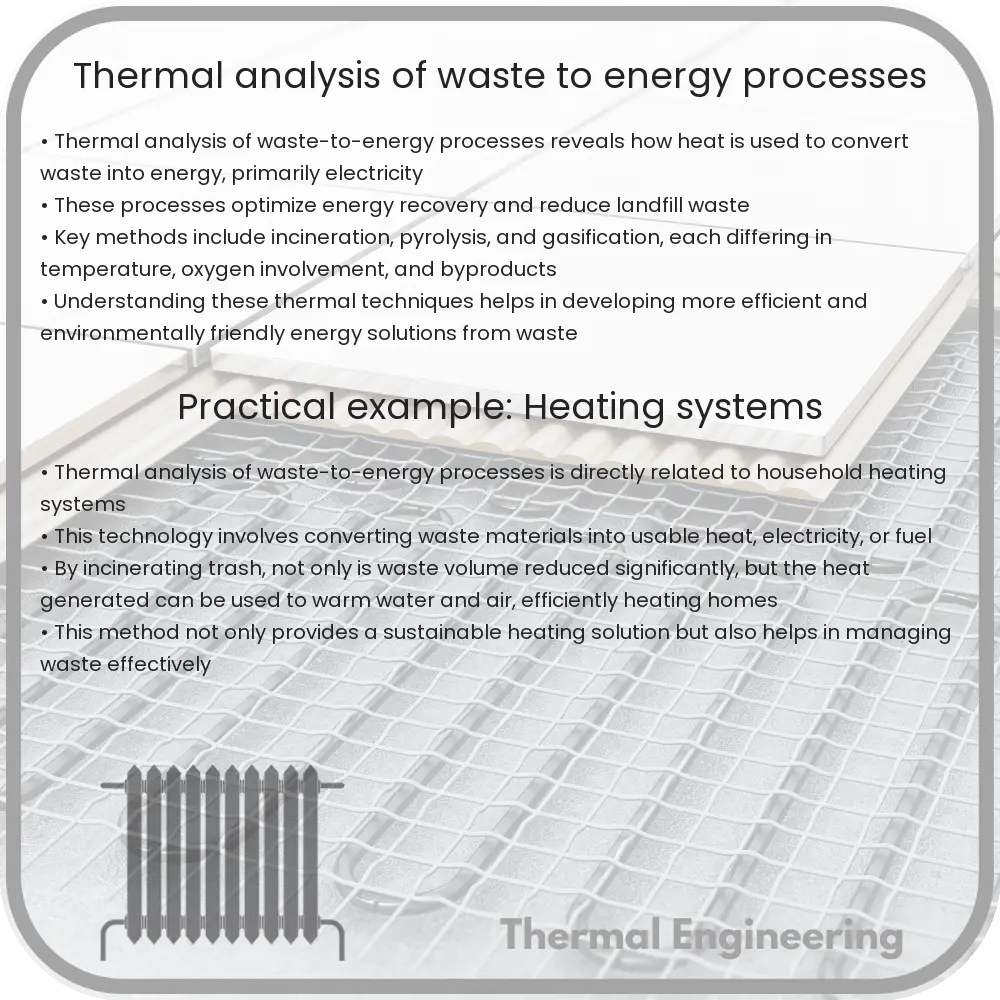Understanding the role of thermal analysis in optimizing waste-to-energy processes for better efficiency and sustainability.

Thermal Analysis of Waste-to-Energy Processes
Transforming waste into energy through thermal technologies is a critical component of managing municipal solid waste and generating energy simultaneously. In this article, we explore the basics of thermal analysis in waste-to-energy (WtE) processes, focusing on the most common methods and their implications on energy production and environmental sustainability.
Understanding Waste-to-Energy Processes
Waste-to-energy (WtE) refers to various technological processes designed to convert either organic or inorganic waste materials into electricity, heat, or combustible fuels. Common technologies in this domain include incineration, gasification, and pyrolysis. The choice of technology impacts the energy recovery efficiency, pollutant emission, and the economic feasibility of the WtE plants.
Incineration
Incineration is the most established WtE process, where waste materials are completely combusted in the presence of oxygen, creating steam that usually drives a turbine to generate electricity. The thermal analysis of such processes focuses on optimizing the burning temperature to enhance efficiency and minimize harmful emissions. Generally, the temperatures in the incinerators range from 850°C to 1100°C. The efficiency of energy conversion in incineration can be expressed as:
Eeff = (Eoutput / Einput) * 100%
where Eoutput is the energy produced in the form of electricity or heat, and Einput is the energy content of the waste.
Gasification
Gasification involves converting carbonaceous materials into a synthetic gas (syngas) consisting of hydrogen and carbon monoxide. This conversion occurs in a controlled environment with limited oxygen. The thermal efficiency of gasification depends on maintaining high temperatures (between 700°C and 1400°C) and managing the reactor’s internal atmosphere to optimize syngas production and calorific value. Accurate thermal analysis ensures the reaction remains endothermic, requiring continuous heat input.
Pyrolysis
Pyrolysis is the thermal decomposition of materials at elevated temperatures (typically above 500°C) in the absence of oxygen. The products of pyrolysis include bio-oil, syngas, and char, all of which can be converted into energy. Thermal analysis in pyrolysis monitors the temperature profile and heating rate, which significantly influence the yield and quality of the outputs. Key considerations include minimizing the activation energy required for decomposition without resorting to excessive temperatures that may reduce the overall energy efficiency.
Thermogravimetric Analysis (TGA)
One pivotal method used in thermal analysis of WtE processes is Thermogravimetric Analysis (TGA), which measures the amount and rate of change in a material’s weight as a function of temperature or time under a controlled atmosphere. For WtE, this helps determine suitable temperatures for maximizing energy output while reducing residual waste.
- Calorimetric Analysis: This involves measuring the heat involved in waste decomposition and transformation, giving insights into the energy potential of waste streams.
- Mass Spectrometry: This is used alongside TGA to analyze the composition of gases produced during the thermal conversion processes, which informs adjustments needed for optimizing energy production and emission controls.
Environmental and Economic Implications
The thermal analysis of WtE processes is not only about maximizing energy efficiency but also about minimizing the environmental impact. Proper thermal control can reduce the formation of dioxins and other harmful emissions typically associated with high-temperature waste treatment. Economically, efficient thermal processes translate to higher net energy gains, which can significantly offset operation costs and contribute to the economic viability of WtE facilities.
In conclusion, thermal analysis plays a crucial role in optimizing waste-to-energy processes. It guides engineers in the selection of appropriate technologies and operational parameters, ultimately leading to more sustainable and economically viable waste management solutions.